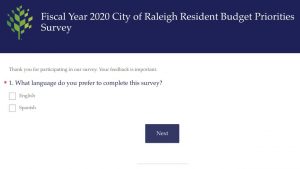
Money may not buy happiness, but it can reveal priorities. Nowhere is that more evident than in government work. People pay taxes and fees and they expect them to cover public services. A few months ago, a large pizza chain turned heads by offering to fill potholes, a task normally reserved for public dollars. The chain reached out to city managers and offered to complete the task as long as they could add their logo to the repair (temporary chalk) and take pictures for a social media campaign. Many people didn’t like the idea, saying the campaign showed a continued degradation of American infrastructure, while others cheered it, saying they were happy to welcome a private company for public work.
Regardless of which side we may take in the pizza-pothole debate, infrastructure and local services are important to our quality of life. Right now, in cities and towns throughout many states, managers are putting together their budget priorities for the coming year. Here’s a primer on how that works and how you can be heard in your community.
First, timing is very important. While good budgeting lasts all year, municipalities generally have one season to put their funding of priorities into one place; it’s called the proposed budget. In many places, the new fiscal year (the start of their budget calendar) begins July first, so the budget has to be approved and ready. Depending on the size of the organization, preparation of the proposed budget begins in January or February and is composed of two things – an operational budget (day-to-day costs) and a capital budget (future purchases such as fire engines, police cars, etc.).
The National League of Cities, a nonprofit that advocates for municipalities offers a simple checklist each community must go through. Generally, each completes the following steps: preparation, approval, implementation and evaluation.
Preparation is happening right now (late winter) in many places, and here’s how it usually works. Various departments in the city or county determine their priorities (both operational and capital) for the upcoming year and submit them to the manager for consideration. In local government, the city or county manager acts as a CEO for the organization. He or she reviews the department submissions and determines what to leave in and what to cut.
The departments send their revised budgets back to the manager for consideration. If all is good, the budgets are then submitted to the local elected body, usually a county commission or city council. Sometimes, the revised budgets are presented to a smaller group of elected delegates first (think finance committee) before they go before the full board.
You may not know that many milestones of the budgeting process are subject to public inspection. Once elected officials are present as a group, the public is invited to listen in, but many don’t know it. I’ve attended many of these meetings and have rarely seen anyone from the public in the room. Often, the reporter from a local newspaper is the only outsider to be there; unfortunately, many local newspapers have folded in recent years so the role of public watchdog may be vacant in some places.
Once the proposed budgets have been shared with elected officials, they may be revised further before they’re considered again in an open meeting, usually in May or June. A majority of the elected board has to vote publicly to support the proposed budget before it can be put into action in July; however, by the time May or June rolls around there isn’t much time left to make revisions. Many of these boards meet only once per month.
If you request changes, it’s much more effective to be part of the process early. Many municipalities or counties are legally obligated to have their budgets ready in June and aren’t open to many changes later in the process.

In many places you can check how your local government spends money online. Here’s an example from Raleigh, NC. You can go line by line through the budget and learn about the community’s priorities. For example, the Raleigh budget for 2018 shows that public safety needs about 19% of dollars spent (cited in the budget as expenditures). These numbers can vary significantly from place to place and they’re often enlightening to residents who are seeing them for the first time.
Either way, the public is entitled to know what its local government considers priorities and how it pays for them. These staffs and elected officials put a huge amount of time into the process and would be happy to have their work appreciated and scrutinized by an informed public.
Brian – excellent points. Here’s a leading effort from California – https://riversideca.gov/transparency/budget-finance/ and two NC communities are doing participatory budgeting, where people at the neighborhood level can help decide particular spending for their area:
Greensboro (their third round of participatory budgeting) – https://www.greensboro-nc.gov/departments/budget-evaluation/participatory-budgeting
Durham: https://www.pbdurham.org/
John – this is great to see. The budgeting process is invisible for many people. We’re busy with day to day activities – raising a family, paying bills, going to work – and we don’t often think about the process until we notice a problem.
Kudos to each of these communities for giving their residents a say and raising awareness. Let’s hope it becomes the norm!